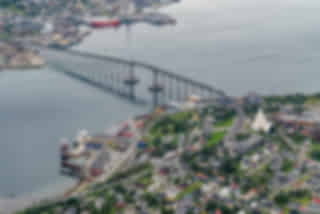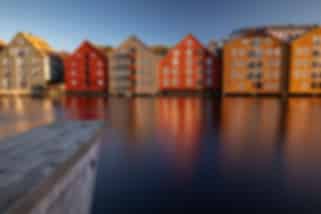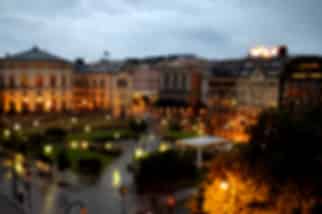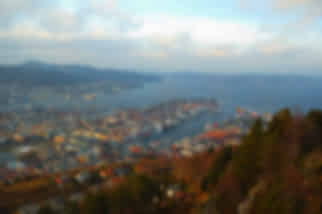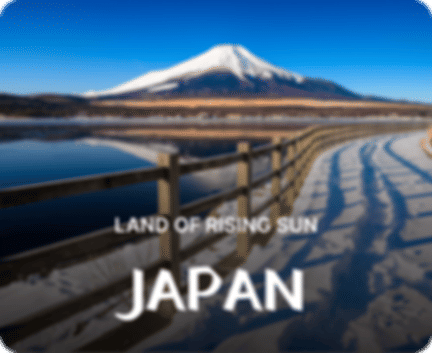Norway Dining Costs & Tipping: Complete Guide for First-Time Visitors
Author
Anvie Shrivastava
Updated Date
November 24, 2025
Read
8 minutes

When you find out you are going to Norway, one of the first questions that comes to mind is: how much are you actually going to spend on food, and do you have to tip anyone? Norway and Norway dining costs are high, with its reputation for high prices and a tech-savvy and cashless society. It is worth knowing the Norway tipping culture and the cost of dining before you travel to Norway to save you the stress (and money). This reference will provide you with a fresh perspective on the cost of meals, payment rules, tipping habits, and the clever aspects of budgeting; therefore, you can travel without feeling trapped.
Planning to eat out in Norway? Discover Norway dining costs, food prices in Oslo, tipping rules, and daily Norway meal budgets in this complete guide.
Why You Should Know About Norway Dining Costs & Tipping
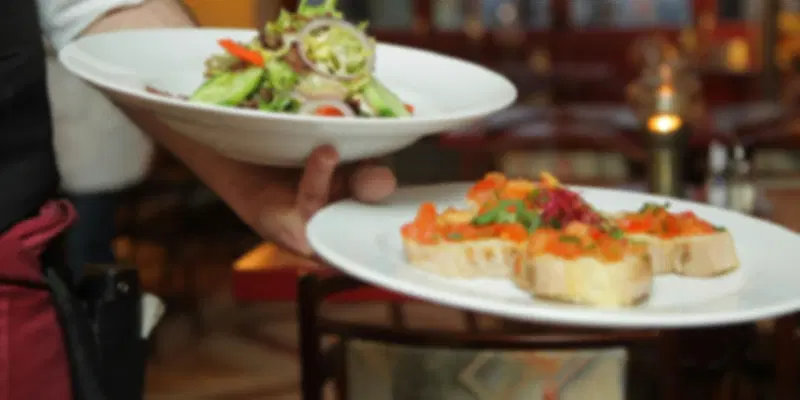
- Avoiding the sticker shock: Norway is a pricey country, yet understanding the realistic daily food budgets is a way to help set the expectations.
- Following payment patterns: You will want to be at the same level since most Norwegians tap-to-pay, use mobile applications, such as Vipps, or BankAxept.
- Knowing when and how to tip: To tip like a local, you have to know how to tip more than you overpay, which means you will not look out of place when you do.
- Budgeting smart: You will get a helpful tip on the meal plans, whether you are eating in Oslo or at the less busy fjord towns.
Read more: Norway trip guide
Norway Food Prices: Typical Costs in Oslo, Bergen & Rural Towns
Here’s a breakdown of typical meal prices in Norway (2026) by location:
| Item | Oslo | Mid-size Cities (Bergen, Trondheim, Stavanger) | Small / Rural Towns | What to Know |
| Café coffee (latte/cappuccino) | 35–55 NOK | 30–50 NOK | 30–45 NOK | Speciality cafés cost more; chain cafés are cheaper. |
| Bakery breakfast (roll + coffee) | 60–120 NOK | 50–100 NOK | 45–90 NOK | Local bakeries beat hotel buffet prices. |
| Casual lunch (sandwich/meal deal) | 120–220 NOK | 110–180 NOK | 100–160 NOK | Look for “dagsmeny” (daily lunch special) – often the best deal. |
| Mid-range restaurant dinner (2-course) | 350–700 NOK | 300–600 NOK | 280–550 NOK | Local ingredients + a casual setting = mid-tier cost. |
| Fine-dining dinner (per person) | 2,000–2,500 NOK | 1,500–2,200 NOK | 1,400–2,000 NOK | Tasting menus can push you into premium territory. |
| Domestic beer (pint) | 90–140 NOK | 80–130 NOK | 75–120 NOK | Bar prices are steep; grocery shops are cheaper. |
| Glass of wine | 110–180 NOK | 100–160 NOK | 90–150 NOK | Ask before you order – wine lists vary. |
| Soft drink (can/small) | 35–50 NOK | 30–45 NOK | 30–40 NOK | Get it from supermarkets to save. |
| Takeaway hot dog/snack (pølse) | 40–70 NOK | 35–60 NOK | 30–55 NOK | Classic Norwegian street food and friendly to your wallet. |
| Kids’ meal | 80–160 NOK | 70–140 NOK | 65–120 NOK | Family restaurants typically have child-sized options. |
Key point: VAT is already included in the prices you see, so there are no hidden charges.
How Norwegians Pay: Cashless Dining, Cards & Mobile Apps
- Cash is uncommon: In Norway, it is absolutely alright to use a card or smartphone to pay.
- Methods of payment: The vast majority of the population pays with tap-to-pay cards, BankAxept, or the Vipps application.
- Huge bills: servers do not need to deposit large amounts of cash; use the card.
- Transparency: Prices on the menu are final – what you see (including VAT) is what you pay.
How to Save Money on Food in Norway: Practical Budget Tips
Want to spend smart, on a limited budget? These are the sure-proven methods:
Bakeries and Supermarkets: It is possible to visit bakeries (bakeri) in order to have breakfast or a snack, and supermarkets in order to take ready-to-eat meals.
- Food Halls: These are locations such as Mathallen in Oslo, which bring together multiple vendors – good food, cheaper than the restaurants.
- Lunch Deals: Enjoy the dagsmeny deal on lunch, the easiest lunch ever.
- Street Food: Take home a polse (hot dog), it is a classic and cheap.
- Reserve One Big Dinner: Choose one fancy evening out as your extravagance – budget the rest a little less.
Tipping in Norway: Etiquette for Tourists
Tipping in Norway is all voluntary; however, this is how the locals do it in reality:
No tipping culture. You do not need to leave a tip, and servers will not feel insulted.
- When you do: A small round-up (5-10) will be fine, provided that the service was outstanding.
- Where to tip:
– Sit-down restaurants: Round up or add a little extra.
– Cafes / Counters: Tend to ignore it.
– Taxi: Round to the nearest nickel.
– Tour Guides: Cash is better when you are taking a private or full-day trip, and tip where you feel the tour guide has done something extra.
– Hotel Personnel: Sweet, and not anticipated.
- Card terminals: In the process of making a payment by card, most machines will ask you to leave a tip (10 NOK / 20 NOK / custom).
- Rounding of cash: e.g. a bill of 432 NOK – people usually round up to 450, or round off to 20-40.
- Service line: When your bill says Service is already added, it is not necessary to tip an additional amount for service unless you would like to.
Useful Norwegian phrases:
- Regningen, takk = “The bill, please.”
- Takk = “Thank you.”
- Kan vi få separate regninger? = “Can we have separate bills?”
Read more: Payment guide in Norway
Daily Food Budget in Norway: How Much to Spend Per Day
The following is the way to estimate a daily food budget:
Build your day:
- Breakfast (bakery),
- Lunch (dagsmeny or sandwich),
- Dinner (mid-range or splurge),
- One drink or snack.
Normal case (mid-size city):
- Breakfast: 80 NOK
- Lunch: 160 NOK
- Dinner: 550 NOK
- Drink: 120 NOK
– Total: ~910 NOK/day
Add a buffer:
- +50-150 NOK/day in case you intend on drinking wine or tipping.
- +10-25 per cent when it is in Oslo or high season.
Norway Travel & Dining Playbook: Smart Eating Strategies
- Oslo: The most expensive.
- Mid-size cities: Bergen, Trondheim, and Stavanger provide a little softer option in terms of price.
- Small towns/fjords: It is normally cheaper, but it will also depend on the remoteness of the place.
- Arctic / Coastal (Tromso, Lofoten): Premium pricing, particularly during the summer months.
- Seafood: When you are at the coast, fresh seafood may be cheaper and fresher than that in your homeland.
Read more: Places to stay in Norway
Payment, Splitting Bills & Receipts in Norway: What Visitors Should Expect
Here is a mini-playbook for a food hacker when going to Norway:
- Eat breakfast in a bakery as opposed to hotel buffets.
- Get the dagsmeny on lunch – it’s yours.
- Ordering supermarket meals as a low-cost dinner.
- Explore the local food in food halls without spending a fortune.
- Get snacks such as the polse as cheap street food.
- Have one luxurious meal each week – count on it.
Timing matters:
- Travel during the non-high season or low season to escape tourist premium prices.
- Early reservation of books in restaurants, particularly fine dining.
Conclusion: Eating Smart in Norway Without Overspending
Going to Norway need not be filled with the worry of paying more and more money, at least when you are there with real information of the up to date information on costs of dining in Norway and their tipping preferences. The prices of meals are also high on paper, but you can afford to spend a fixed amount with clever budgeting methods (bakery breakfasts, dagsmeny lunch, food halls, supermarket food). Tipping is not obligatory, and rounding up is quite welcome, and it is almost always electronic.
If you want better logistics and predictability in planning your stay, Pickyourtrail has great Norway tour packages that can manage not just accommodation and transport, but also suggest local dining options aligned with your budget. For example, check out their Norway Fjords & Northern Lights package, or explore their curated custom Norway vacation planner.
FAQs
Do I need to tip in Norway restaurants?
No, in Norway it is not obligatory to tip. An excellent service needs only a small round-up (5-10%), and you will never hurt a customer by leaving without a tip.
How much is a regular meal in Norway?
A basic lunch (such as a sandwich) will cost 120-220 NOK in Oslo, and a two-course meal in a mid-range restaurant will be between 350 and 700 NOK per person.
Does the price of food in Norway include tax?
Yes, everything at a restaurant (including the menu, even) already has VAT (usually 25%), there are no secret taxes on service, except those that are stated above.
Can I pay with cash in Norway?
Although in certain areas it is accepted in cash form, in the majority of locations, Norwegians prefer using cards or mobile payment, such as Visa/Mastercard, BankAxept, or Vipps.
What is “dagsmeny” and why should I order it?
Dagsmeny is translated as daily lunch special, and it is usually one of the most affordable yet generous meals that both tourists and locals can have.
Is eating out in Oslo more expensive than in other Norwegian cities?
Yes – Oslo food prices are typically 10–25% higher than in midsize cities like Bergen or Trondheim.
Do card terminals in Norway let me tip?
Yes – there are a lot of card machines that will make you tip (with a predetermined sum such as 10 or 20 NOK, or a sum of your own choice). Otherwise, you can round it off in cash.
Recommended articles for you
Discover Packages


Need help in planning?
Talk to our Travel Experts


